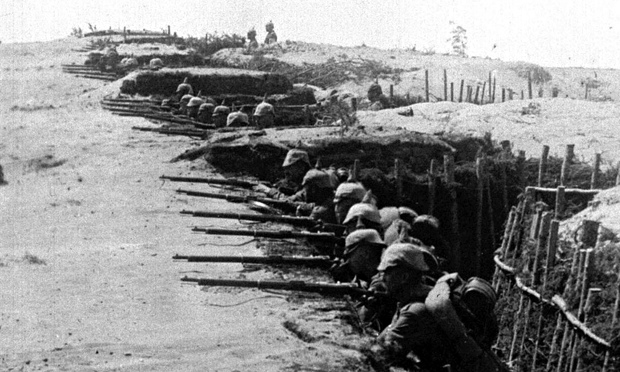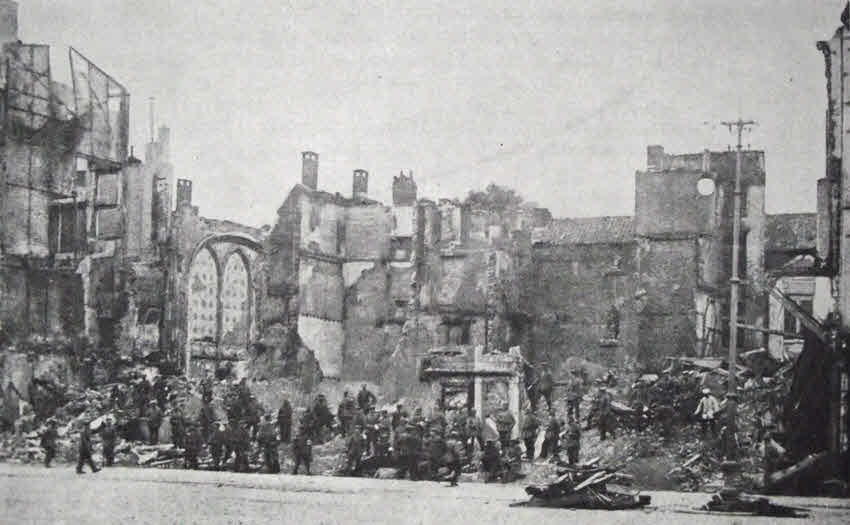
On August 5, 1914, the German army launches its assault on
the city of Liege in Belgium, violating the latter country’s
neutrality and beginning the first battle of World War I.


German troops exploring the ruins of Liege after the city fell
to them in early August 1914.


















